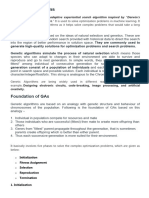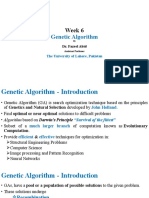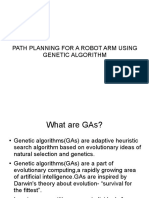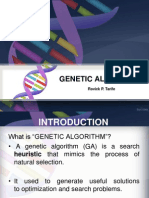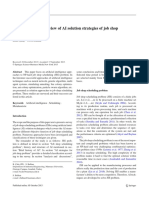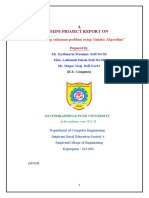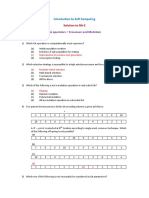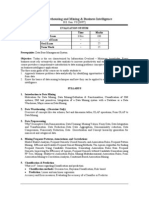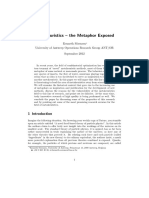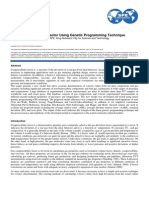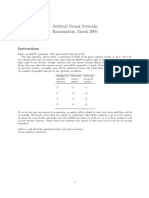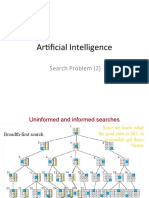0% found this document useful (0 votes)
18 views4 pagesGenetic Algorithms
Genetic algorithms (GAs) are optimization techniques inspired by natural selection, simulating 'survival of the fittest' to generate high-quality solutions. They operate through a population of individuals represented as chromosomes, evolving through selection, crossover, and mutation to improve fitness scores across generations. GAs have various applications, including neural networks, code breaking, and signal processing, but can be time-consuming and complex to implement.
Uploaded by
abolikoraleCopyright
© © All Rights Reserved
We take content rights seriously. If you suspect this is your content, claim it here.
Available Formats
Download as PDF, TXT or read online on Scribd
0% found this document useful (0 votes)
18 views4 pagesGenetic Algorithms
Genetic algorithms (GAs) are optimization techniques inspired by natural selection, simulating 'survival of the fittest' to generate high-quality solutions. They operate through a population of individuals represented as chromosomes, evolving through selection, crossover, and mutation to improve fitness scores across generations. GAs have various applications, including neural networks, code breaking, and signal processing, but can be time-consuming and complex to implement.
Uploaded by
abolikoraleCopyright
© © All Rights Reserved
We take content rights seriously. If you suspect this is your content, claim it here.
Available Formats
Download as PDF, TXT or read online on Scribd
/ 4








